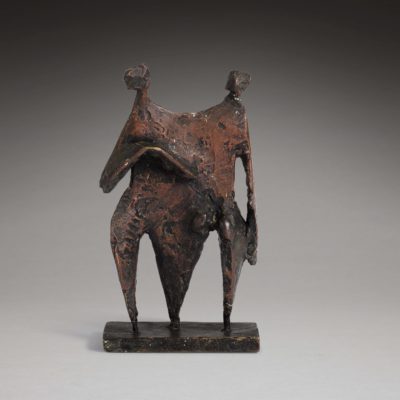Armitage was part of the great renaissance of British sculpture in the post-war years. Born in 1916, Armitage attended Leeds College of Art and went on to win a scholarship at the Slade School of Art. During the second World War he served in the army, but when this ended, he took up the Head of Sculpture position at the Bath Academy of Art, Corsham, Wiltshire. Along with William Scott (who was Head of Painting), Armitage helped it become one of the most innovative art schools in the country. The art of bronze casting had been in severe decline because of the austerity of the post-war years; Armitage was instrumental in setting up a new foundry at Corsham so that work by students and staff could be cast under their own supervision.
Armitage’s very early works were carved in stone, but in the post-war years he began casting in bronze, initially using plaster modelled on metal armatures, later using clay. In 1952, He was chosen to exhibit at the 26th Venice Biennale as part of a group of young British sculptors including Reg Butler, Lynn Chadwick, William Turnbull and Eduardo Paolozzi. His first solo shows were held at Gimpel Fils, London (1952) and the Bertha Schaefer Gallery, New York (1954).


